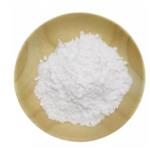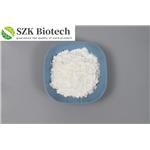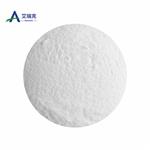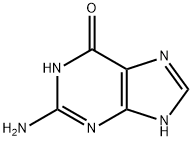- Guanine
-

- $40.00 / 10kg
-
2024-04-26
- CAS:73-40-5
- Min. Order: 10kg
- Purity: 99.99%
- Supply Ability: 100Tons
- Guanine
-

- $1.00 / 1mg
-
2024-04-15
- CAS:73-40-5
- Min. Order: 100mg
- Purity: 0.99
- Supply Ability: 5ton/month
- Guanine
-

- $0.00 / 1Kg
-
2024-04-09
- CAS:73-40-5
- Min. Order: 1Kg
- Purity: 99.9%
- Supply Ability: 200tons
|
| Product Name: | Guanine | | Synonyms: | 9H-Guanine;Valaciclovir EP Impurity A;Guanine Vetec(TM) reagent grade, 99%;6H-Purin-6-one, 2-amino-1,7-dihydro- (9CI);6H-purin-6-one, 2-amino-3,7-dihydro-;Guanine (8CI);InChI=1/C5H5N5O/c6-5-9-3-2(4(11)10-5)7-1-8-3/h1H,(H4,6,7,8,9,10,11;Mearlmaid AA | | CAS: | 73-40-5 | | MF: | C5H5N5O | | MW: | 151.13 | | EINECS: | 200-799-8 | | Product Categories: | Acyclovir;Biochemistry;Nucleobases and their analogs;Nucleosides, Nucleotides & Related Reagents;Nucleic acids;Bases & Related Reagents;Nucleotides;Purines;nucleoside;API;Purine;Pharmaceutical Intermediates;Intermediates;john's | | Mol File: | 73-40-5.mol |  |
| | Guanine Chemical Properties |
| Melting point | >300 °C (lit.) | | Boiling point | 273.11°C (rough estimate) | | density | 1.4456 (rough estimate) | | refractive index | 2.0000 (estimate) | | storage temp. | 2-8°C | | solubility | 1 M NaOH: 0.1 M at 20 °C, clear, colorless | | form | Powder | | pka | 9.92(at 40℃) | | color | White to cream | | Odor | Odorless | | Water Solubility | practically insoluble | | Decomposition | 360°C | | Merck | 14,4564 | | BRN | 9680 | | Stability: | Stable. Incompatible with strong oxidizing agents. | | InChIKey | UYTPUPDQBNUYGX-UHFFFAOYSA-N | | LogP | -0.910 | | CAS DataBase Reference | 73-40-5(CAS DataBase Reference) | | NIST Chemistry Reference | 6H-Purin-6-one, 2-amino-1,7-dihydro-(73-40-5) | | EPA Substance Registry System | Guanine (73-40-5) |
| | Guanine Usage And Synthesis |
| Organic bases | Guanine is an organic base that is widespread in the animal and the plant kingdom. The chemical name is 2-amino-6-oxo-purin. It is colorless square crystals or crystalline powder. In the aqueous solution containing a large excess of ammonia, it will become small diamond crystal after slowly evaporating the water. It has a melting point of 360 ℃ (partially decomposed and sublimated). It can be dissolved in ammonia water, caustic soda and dilute mineral acid, slightly soluble in ethanol, ethyl ether, and insoluble in water. It has a strong UV absorption. It is the major composition of guanosine and guanylate. Its hydrochloride monohydrate is powdery crystals with water being loss at 100 ℃ and hydrogen chloride being loss at 200 ℃. It can be dissolved in acidified water but is insoluble in water, alcohol, and ether. Guanine can be obtained through the hydrolysis of scale in hydrochloric acid. It is an important base composition of nucleic acids, being one of the four major bases of DNA and RNA as well as the compassion of various kinds of guanylate. Its N9 can be connected with the C1 of ribose or deoxyribose with β-glycosidic bond to obtain guanosine or deoxy-guanosine.
[Major application]: for biochemical research and preparation of caffeine and other drugs.
Its chemical composition is 2-amino-6-mercaptopurine. It, together with adenine, constitutes the two major purines bases in the nucleic acid. Through binding to ribose guanosine or deoxyribose guanosine through the glycosidic linkages, the corresponding triphosphates are guanosine triphosphate or deoxyguanosine triphosphate, respectively. They are the precursor of guanine during the biosynthesis process of RNA and DNA.
| | 6-Thioguanine | 6-Thioguanine belongs to another kind of common purine metabolism antagonist in the inhibition of the purine synthesis pathway and is a cell cycle specific drugs to which those cells locating in the cycle S period are most sensitive. In addition to inhibit the biosynthesis of cellular DNA, it also has mild inhibitory effect on the biosynthesis of RNA. This product is a kind of guanosine analogs. It becomes active only after being converted to 6-TG ribonucleotide via the phosphor-ribosyltransferase inside human body. The action process of this product is similar to that of mercapto-purine. In addition, 6-TG ribonucleotide, through its inhibitory effect on guanylate kinase, can prevent the phosphorylation of guanosine monophosphate (GMP) into guanosine diphosphate (GDP). This product, after being metabolized into deoxyribonucleoside triphosphate, can be embedded in DNA, thus further inhibiting the biosynthesis of nucleic acids while mercaptopurine having no effect. The product has cross-resistance with mercaptopurine while it can have its efficacy improved upon combination with other drugs such as cytarabine. Its oral absorption after oral administration is incomplete, at about 30%. Only a relatively small amount of the drug can shift from the blood to penetrate through the blood-brain barrier, therefore at generally oral dose, it is insufficient to prevent and treat meningeal leukemia. The activation and decomposition process of the product both proceeds in the liver with being de-activated through either shifting the amino-methyl mercaptopurine via methylation or shifting to mercaptopurine via deamination. However, the metabolic process of inactivation is not related to xanthine oxidase, therefore taking allopurinol has no significant inhibitory effect on the metabolism of this product. The half-life of intravenous injection is 25~240 min with the average period being 80 min. Through being excreted through the kidneys, for one time of oral administration, about 40% of the drug is excreted in urine in the form of metabolites within 24h with only trace amount of 6-Thioguanine being detected in the urine.
| | Chemical Properties | It is colorless needle crystal or amorphous powder. The melting point is 360 ℃ (decomposition). It is easily soluble in acid and alkali, slightly soluble in alcohol, ether, but insoluble in water.
The above information is edited by the chemicalbook of Dai Xiongfeng.
| | Uses | It can be used for biochemical studies.
It can be used as the intermediates of the antiviral drugs acyclovir.
It can be used as the intermediate of thioguanine and open-ringed guanine.
| | Production method | 5-amino-4-imidazolyl amide can have esterification reaction with isothiocyanate methylbenzene to generate ester, and then successfully reacted with methyl iodide, ammonia to synthesize it.
| | Chemical Properties | white to light yellow crystal powder | | History | Guanine is one of the two purines comprising the five nucleic acid bases. Much of the information
regarding the general role of nucleic acid bases is covered in Adenine and Cytosine. Guanine gets its name from guano, from which it was first isolated in the 1840s. Albrecht Kossel (1853 1927) determined that guanine (as well as adenine, cytosine, thymine and uracil) was a component of nucleic acid in the last two decades of the 19th century. Similar to adenine, guanine combines with ribose to form a nucleoside. The nucleoside produced is guanosine, which in turn combines with one to three phosphoryls to yield the nucleotides guanosine monophosphate (GMP), guanosine diphosphate (GDP), and guanosine triphosphate (GTP), respectively. Guanine nucleotides play an important role in metabolism including the conversion of adenosine diphosphate (ADP) to adenosine triphosphate (ATP) and carbohydrate metabolism. | | Uses | Guanine is a crystalline amorphous substance that is found in guano, fish scales, and theliver of certain mammals. Guanine is responsible for the silvery iridescence of certain fishscales. Before its discovery, guanine was scraped from fish scales and used to coat beads to produceimitation pearls. Thus it was called pearl essence or pearly white in the 1700s. Guanineobtained from fish scales is used in cosmetics, especially for eye cosmetics and nail polishes. | | Uses | guanine is mixed in water and used primarily in nail polish to achieve a pearlized effect. It has been greatly replaced by either synthetic pearl or aluminum and bronze particles. guanine is obtained from plant or animal sources. | | Uses | Guanine is on one of the five nucleobases incorporated into biological nucleic acids. Guanine, along with adenine and cytosine, is present in both DNA and RNA, whereas thymine is usually seen only in
DNA, and uracil only in RNA. | | Definition | ChEBI: A 2-aminopurine carrying a 6-oxo substituent. | | Definition | guanine: A purine derivative. It isone of the major component bases ofnucleotides and the nucleic acidsDNA and RNA. | | Definition | A nitrogenous
base found in DNA and RNA. Guanine has
a purine ring structure. | | General Description | Pharmaceutical secondary standards for application in quality control, provide pharma laboratories and manufacturers with a convenient and cost-effective alternative to the preparation of in-house working standards.
Guanine is one of the building blocks of both RNA and DNA that plays a significant role in protein biosynthesis as well as the storage of genetic information. | | Biological Activity | guanine is one of the four main nucleobases found in the nucleic acids dna and rna.guanine is a purine derivative, consisting of a fused pyrimidine-imidazole ring system with conjugated double bonds. |
| | Guanine Preparation Products And Raw materials |
|